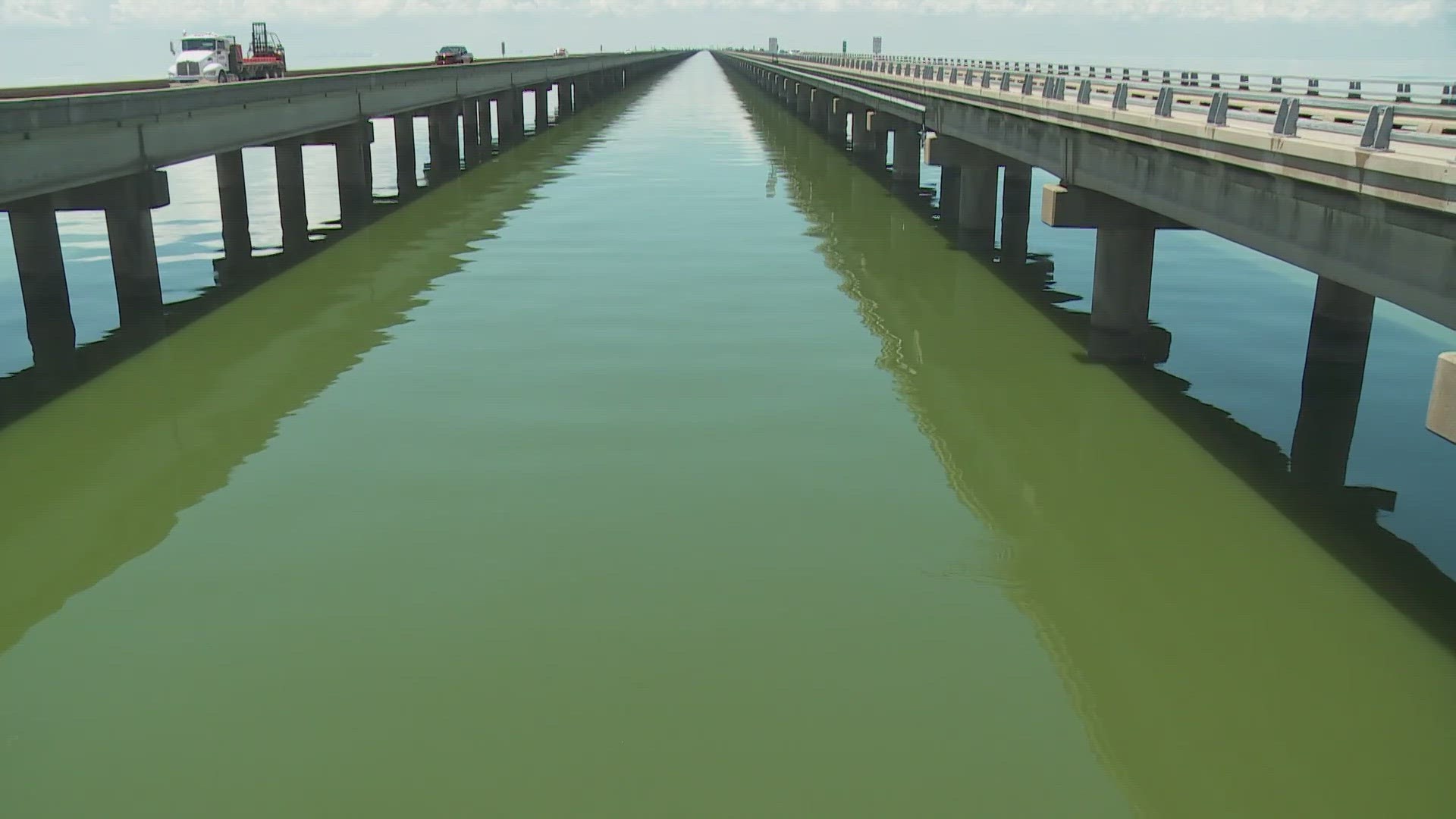NEW ORLEANS — Parts of Lake Pontchartrain in the New Orleans area are now lime green.
“The lake’s pretty ripe,” said Lake Pontchartrain Causeway GM Carlton Dufrechou. “We’ve got a lot of algae, just under the surface right now, primarily on the northern half, passing on either side of the Causeway.”
This week, satellite images from the National Centers for Coastal Ocean Science showed algal blooms in both Lakes Pontchartrain and Maurepas.
The Louisiana Department of Health is now urging residents to avoid areas of the lakes with blue-green algae.
According to LDH, “If you see or smell a bloom: Stay out of affected water: Refrain from swimming, wading, or participating in water activities like boating in areas with active algal blooms.”
“The con is that if it gets too much, it could become toxic as it did in 1997, but I don’t think we’re anywhere near that,” said Dufrechou, who is the former executive director of the Lake Pontchartrain Basin Foundation. “The plus is, it’s the basis of the food chain, for all the little fish, we’ve got gazillions of menhaden out in Lake Ponchartrain now feeding all over the place.”
But according to the Pontchartrain Conservancy, based on weekly water quality testing in the lake, it “...does not believe there to be an algae bloom in Lake Pontchartrain. (and that) The warning recently issued by the Louisiana Department of Health (LDH) was solely based off visual observations and not water sampling data.”
The Louisiana Department of Environmental Quality had this to say, “Lake Maurepas has been blooming for a couple of weeks now, which is relatively unusual, as is the current Lake Pontchartrain bloom.”
For now, Dufrechou says if you see water the color of antifreeze, don’t jump in.
“If we ingest it while swimming, swallow it, it could cause stomach viruses, actually if it gets really toxic, that’s when it could cause some very bad health problems.”
LDH also says don’t let your pets swim in or drink from water suspected of experiencing an algal bloom.
“While some algae are harmless, certain types can produce toxins that are harmful to humans, animals and the environment,” said a Health Department news release. “Therefore, it is crucial for individuals to be knowledgeable and take necessary precautions when encountering water bodies affected by algae blooms.
Dufrechou says those afternoon thunderstorms we get this time of year could help break up the blooms.
► Get breaking news from your neighborhood delivered directly to you by downloading the new FREE WWL-TV News app now in the IOS App Store or Google Play.

